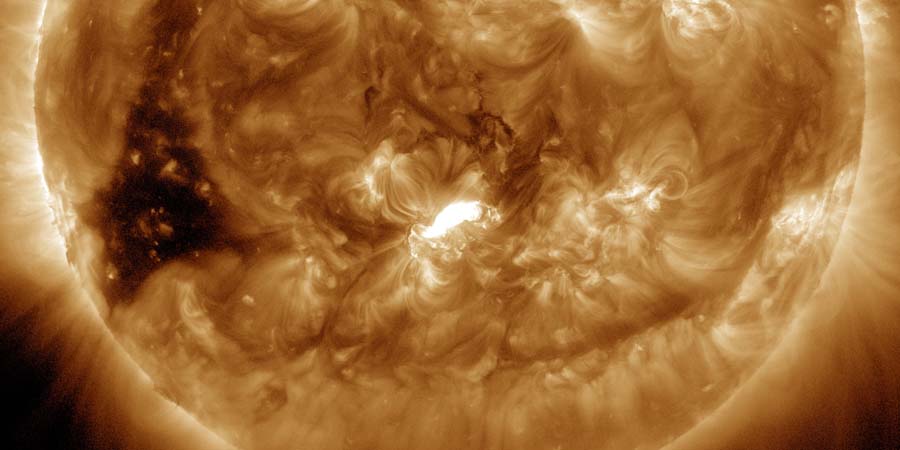M9.8 solar flare with earth-directed CME
Wednesday, 29 November 2023 17:24 UTC

A near X-class (M9.8) solar flare (R2-moderate) erupted yesterday at 19:50 UTC. It was sunspot region 3500 which was pretty much on the center of the earth-facing solar disk at the time that was the source of this eruption.
The eruption launched an asymmetrical full halo coronal mass ejection which means the coronal mass ejection is pretty much guarantied to hit Earth. A launch speed of about 1.100km/sec puts the arrival time at Earth for this eruption during the UTC afternoon or evening on Friday, 1 December.
Another look at the full hall coronal mass ejection launched by yesterday's M9.8 solar flare. As expected, the plasma cloud is earth-directed and expected to arrive late on Friday, 1 December. Expect geomagnetic storm conditions after the cloud arrives. pic.twitter.com/kRSrG8rmCq
— SpaceWeatherLive (@_SpaceWeather_) November 29, 2023
This eruption would follow two other (minor) coronal mass ejections which were released two days ago. These two plasma clouds are also expected to arrive at Earth on 1 December but these eruptions are not of the same caliber as the one from the M9.8 solar flare. It is hard to tell if this M9.8 eruption will catch up and cannibalize these minor coronal mass ejections or if we see two (or three) distinct impacts one after the other. All in all we will have a very stormy start of December with a messy solar wind environment at Earth. Geomagnetic storm conditions of the moderate G2 geomagnetic storm level are expected with a slight chance of strong G3 storm conditions. Well worth the effort to keep an eye on the solar wind data right here on SpaceWeatherLive on Friday and over the weekend! Good luck and have fun aurora chasing!
Thank you for reading this article! Did you have any trouble with the technical terms used in this article? Our help section is the place to be where you can find in-depth articles, a FAQ and a list with common abbreviations. Still puzzled? Just post on our forum where we will help you the best we can!
Latest news
Latest forum messages
Support SpaceWeatherLive.com!
A lot of people come to SpaceWeatherLive to follow the Sun's activity or if there is aurora to be seen, but with more traffic comes higher server costs. Consider a donation if you enjoy SpaceWeatherLive so we can keep the website online!

Space weather facts
| Last X-flare | 2025/03/28 | X1.1 |
| Last M-flare | 2025/04/29 | M1.6 |
| Last geomagnetic storm | 2025/04/21 | Kp5+ (G1) |
| Spotless days | |
|---|---|
| Last spotless day | 2022/06/08 |
| Monthly mean Sunspot Number | |
|---|---|
| March 2025 | 134.2 -20.4 |
| April 2025 | 126.5 -7.7 |
| Last 30 days | 126.8 -0.8 |


